Types of natural stone for home decoration
Stone houses in our time gave way to its cheaper (practical, environmentally friendly, etc.) counterparts, but the stone itself, which is firmly associated with fortress, wealth and reliability, its place in suburban construction has not given way. Only changed the scope, becoming a favorite finishing material.
Scientists have about 9000 kinds of natural stone, but not everyone is suitable for "construction" purposes. There are many reasons for this, and in order not to break your head over unnecessary questions, today we propose to get acquainted with the most common in the finishing business rocks.
Granite

Complex in its composition natural stone, an indispensable building and finishing material, durable, hard and wear-resistant, it makes the presence of quartz, has a pronounced grain-crystalline structure, the size of grains is divided into fine, medium and coarse-grained.
Physical properties: durability and strength; well polished, keeping a mirror shine of the surface for a long time; easy to grind, so you can get different textures; has high wear resistance and low water absorption; does not lose its decorative qualities in all conditions of use.
Color palette: gray of different shades (the most common), pink, red, orange, bluish-gray and bluish-green (amazonite), occasionally a stone with blue quartz.
Disadvantage: rough surface, rapid cracking and breaking out in fire.
Application of granite:
- facing of plinths and facades
- floor and wall lining inside buildings
- manufacturing of steps of any types
- paving of squares and paths
- small architectural forms, including fountains
- as rubble in civil works
Syenite (egyptian granite)
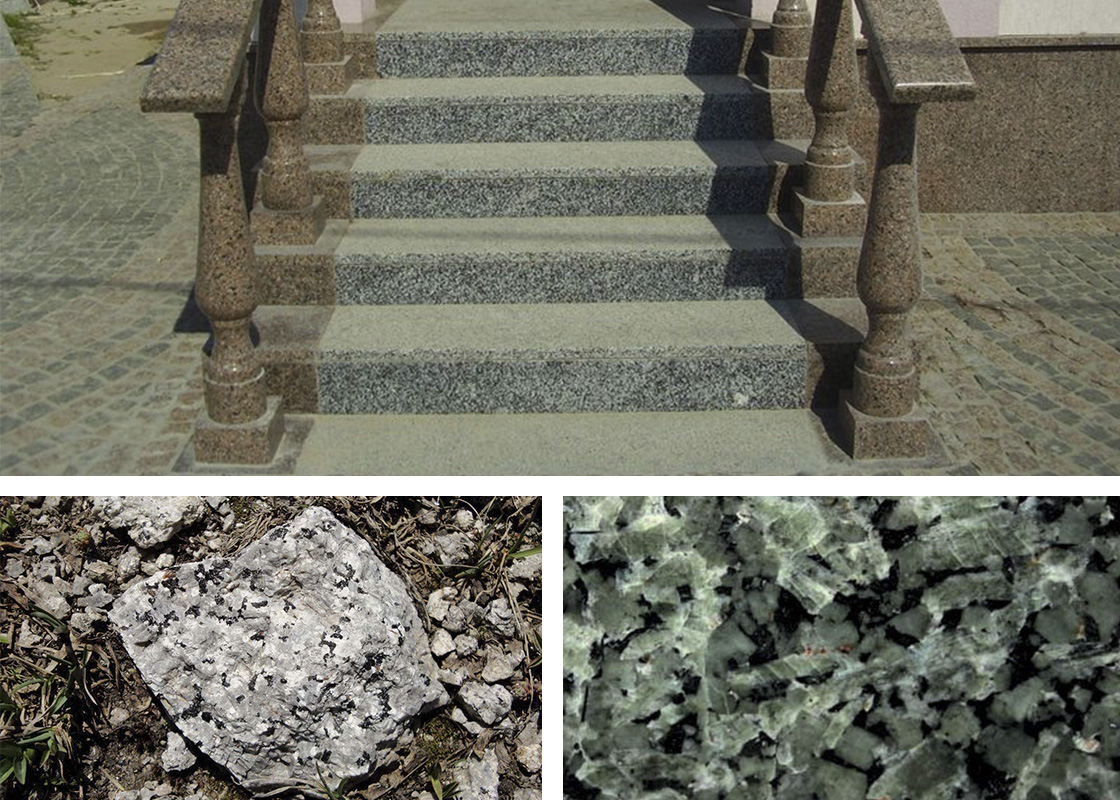
An underground rock, similar in appearance to granite, but distinguished by its less pronounced granularity and the absence of quartz (this makes syenite more suitable for processing). It is used in construction in the same way as granites.
Color palette: usually darker than granites, they can be gray, gray-blue, pink, pinkish-gray; the color depends on the presence of dark-colored minerals (pyroxene, hornblende, etc.).
Physical properties: syenites have high resistance to pressure and loads, well tolerate temperature jumps, are fire-resistant, have a low coefficient of water absorption, are well polished. Density 2600-2800 kg/m2, Strength 150-300 MPa.
Disadvantage: not too resistant to weathering
Application of syenite:
- cladding of plinths and facades, floors and walls inside buildings
- manufacturing of steps of any types
- paving of sites and paths
- small architectural forms, including fountains
- roofing material
Gabbro
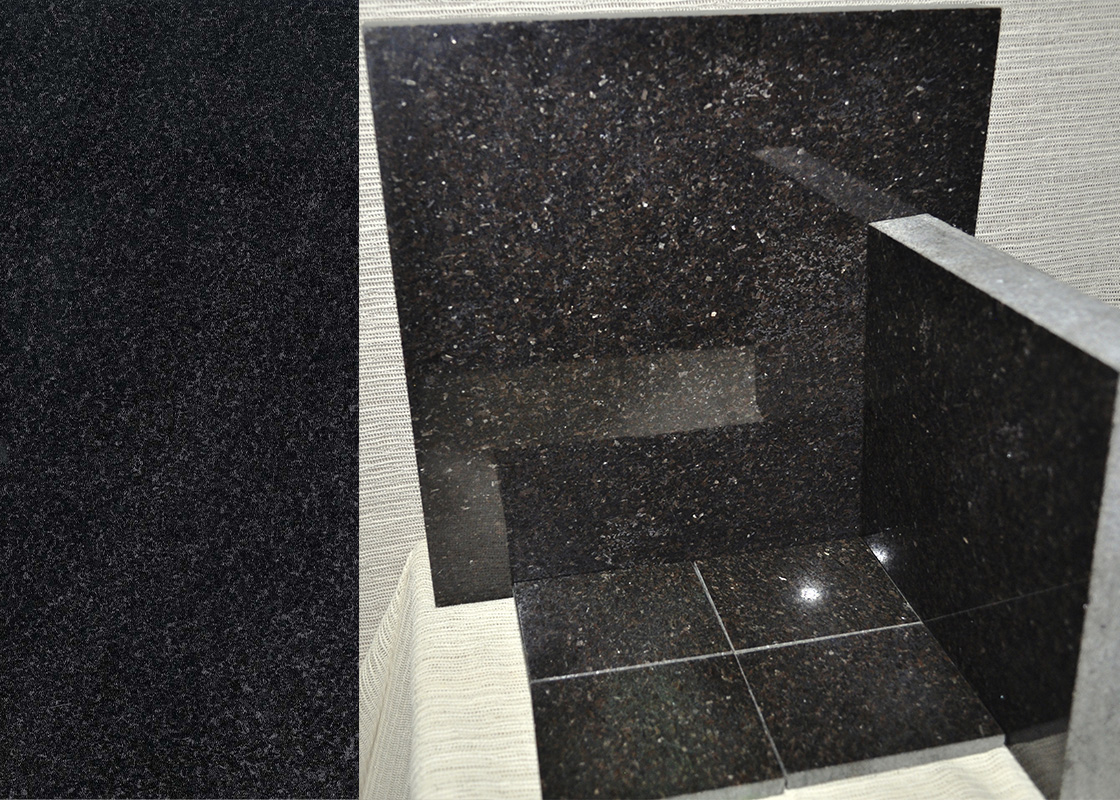
A deep (igneous) crystalline rock, usually coarse- to medium-grained; has the same structure and application as granite.
Color range: dark grayish-green to black; green varieties are called olivine gabbro.
It is easy to machine, polishes very well and keeps its luster for a long time, polished it becomes very deep, which makes it different from other black stones. It is highly durable, withstands frost well, and is highly resistant to weathering.
Disadvantage: in places with heavy traffic, gabbro floors quickly lose their polish.
Application of gabbro:
- facade cladding, exterior finishing of buildings
- floor cladding in private houses
- monumental art, monuments
Labradorite (peacock stone)
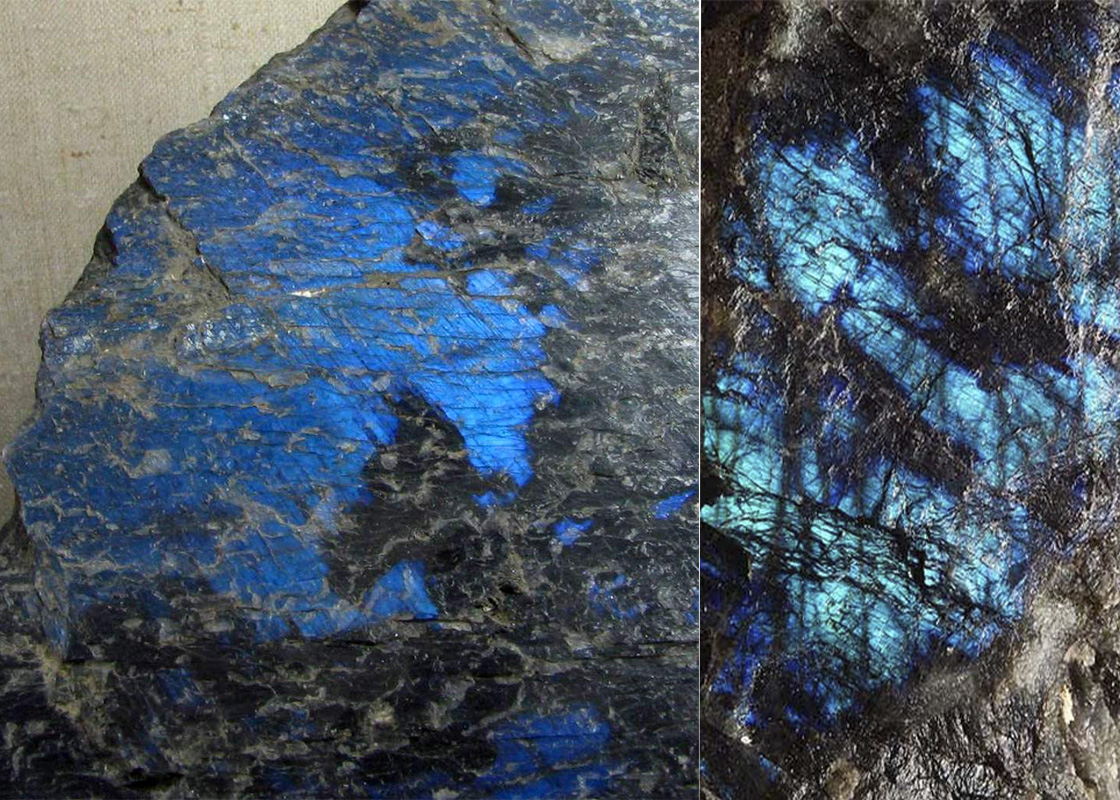
A magmatic crystalline-grained rock
Color palette: usually black and gray, occasionally light. Rainbow surface stains of blue-green, more rarely golden-yellow or orange color give the stone its decorative effect.
Physical properties: high strength, wear-resistance and frost-resistance; water absorption no more than 0,21, density 2,71; the stone is moderately hard, brittle, perfectly polished, extremely decorative.
Application of labrodorite:
- exterior finish of buildings
- floors, columns, wall plinths
- monumental architecture
Porphyry
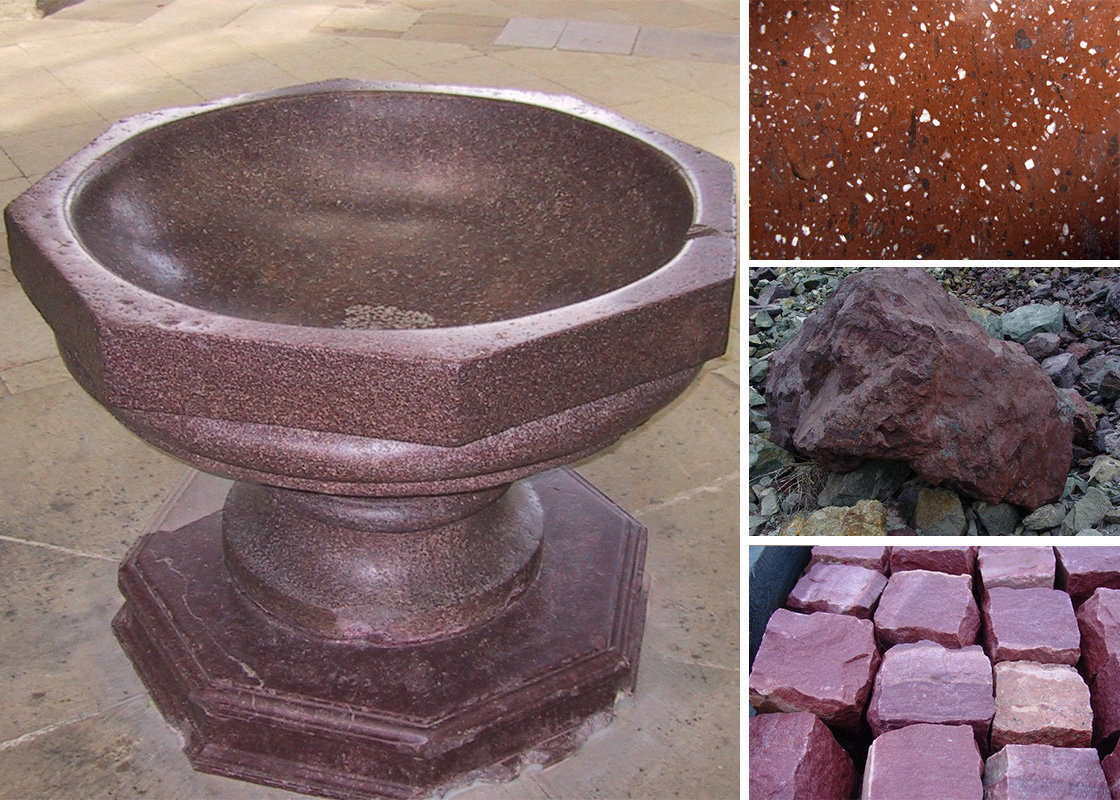
A general term for rocks with a porphyry structure: an irregularly grained structure in which large crystals found in the groundmass (usually volcanic glass) are blended with minerals (porphyry segregations). In chemical composition and properties, porphyries are close to granite. Porphyry takes its name from the distinctive red rock with white large orthoclase (a variety of feldspar), which has been used since Ancient Rome for luxuries and Caesar statues.
Color palette: dark red, purple porphyry is extremely decorative and was used in the monumental art; you can also find gray, yellow, pink and brown of different shades.
Physical properties: Hard, very decorative, resistant to crazing, long-lasting; easy to polish; has a low coefficient of water absorption. The individual characteristics depend on the composition of the stone.
Application of porphyry:
- cladding of floors, columns, wall plinths
- monumental architecture
- Paving of terraces, sidewalks, paths, driveways
Quartzite
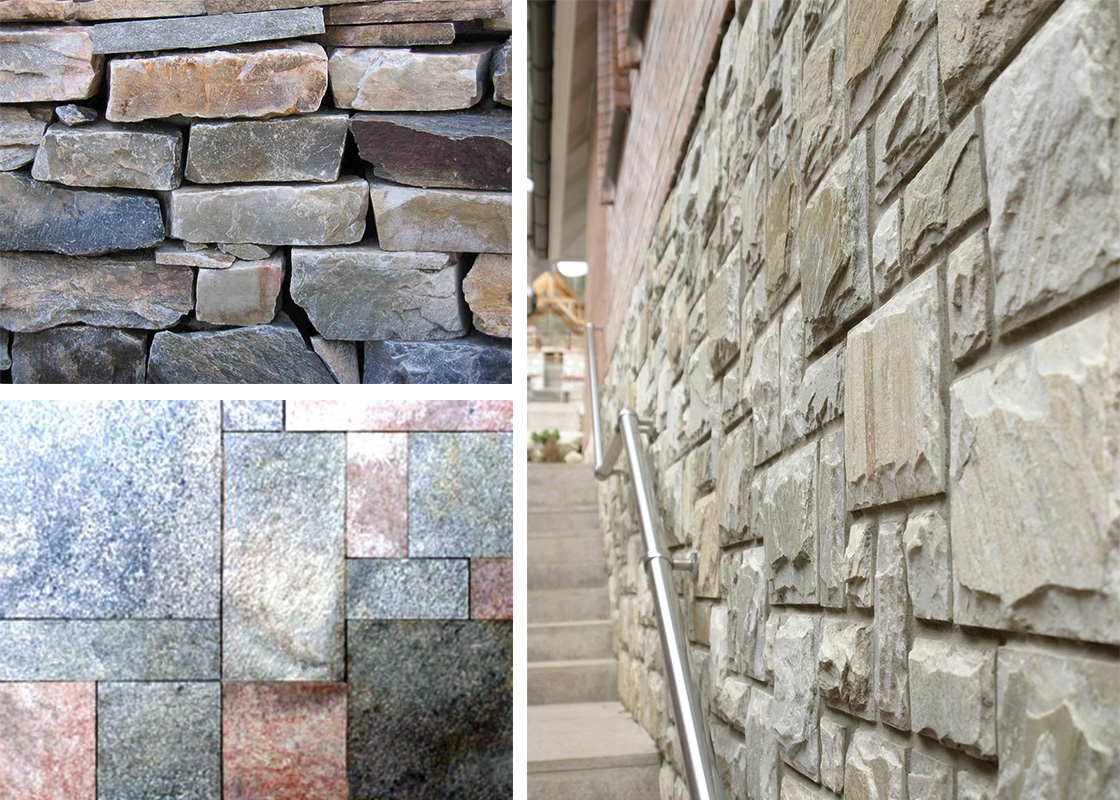
A fine-grained sedimentary rock; formed as a result of a modification of siliceous sandstones. Known since ancient times, it can be seen in the decoration of the Church of the Savior on Spilled Blood and the upper part of the Lenin Mausoleum.
The color palette: gray, pink, yellow, the most decorative are crimson-red and dark cherry, sometimes white quartzite; the color is determined by the presence of glandular pigment.
Physical properties: it has a very high hardness, but can be polished to a very high quality, so it is considered a very decorative finishing material. Extremely durable, acid-resistant, frost-resistant, has a compressive strength of 100-450 MPa, low water absorption coefficient and density of about 2.7 g/cm3.
Quartzite applications:
- monumental construction
- facade and basement cladding
- interior finishing
- paving of terraces, platforms, retaining walls
Marble
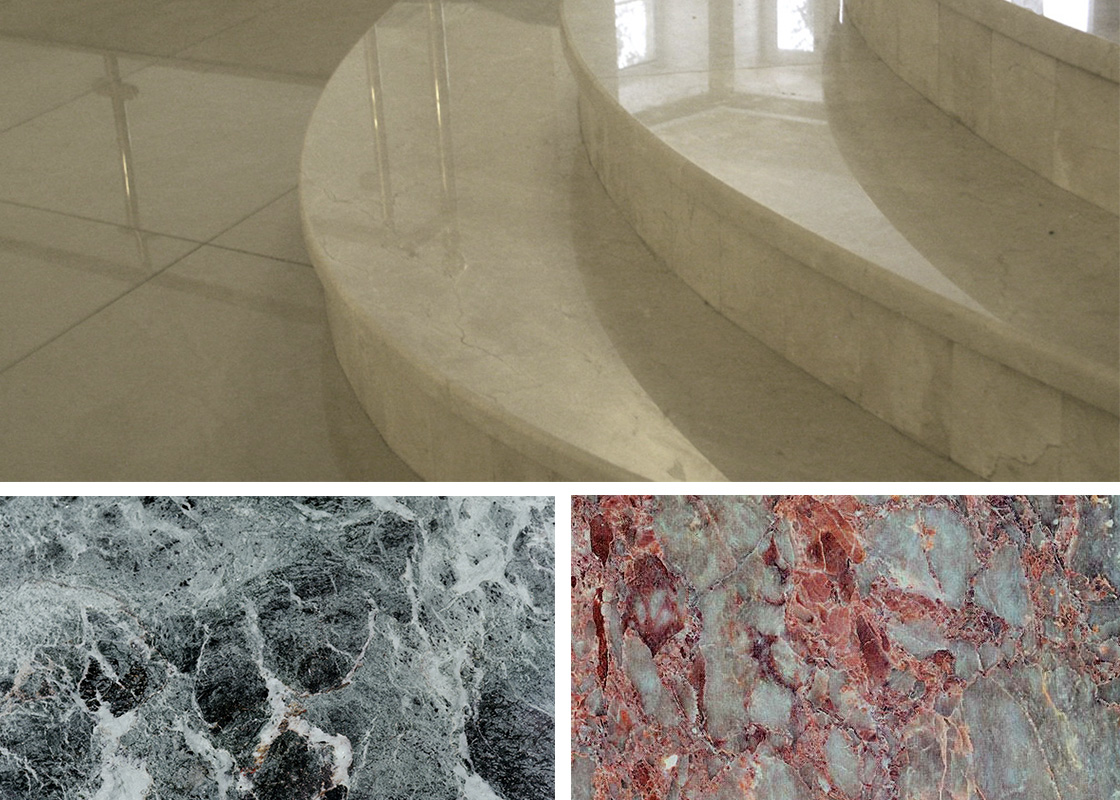
A metamorphic rock, formed under the influence of high temperatures and pressure and consisting only of calcite. In construction, not only this stone is called marble, but also other rocks similar to it - marble-like limestones, dolomites, carbonate breccias.
Color Palette: "pure" marble is usually light uniform color - white, grayish, yellowish, silicate marble, which impurities of other minerals (hematite, limonite, manganese oxides, graphite, etc.) give color shades of green, red and even black.
Marble often has a pattern - mottled, spotty, wavy, moiré; polishing reveals a pattern and color, polishing reduces its brightness and clarity, the texture of chipping hides the pattern and brightens the overall background.
Physical properties: well amenable to mechanical processing, easy to polish, extremely decorative; medium hardness, density about 2.7, good dielectric, has good indicators of heat resistance.
Disadvantage: the most valuable fine-grained white marble, which is famous for its warm tone and "translucent" structure, is very capricious, as prone to staining and yellowing in unfavorable conditions.
Application of marble:
- laying of interior floors
- facing walls, flights of stairs, fireplaces, saunas
- baluster production
- creation of sculptures, mosaic compositions and bas-reliefs
Slate
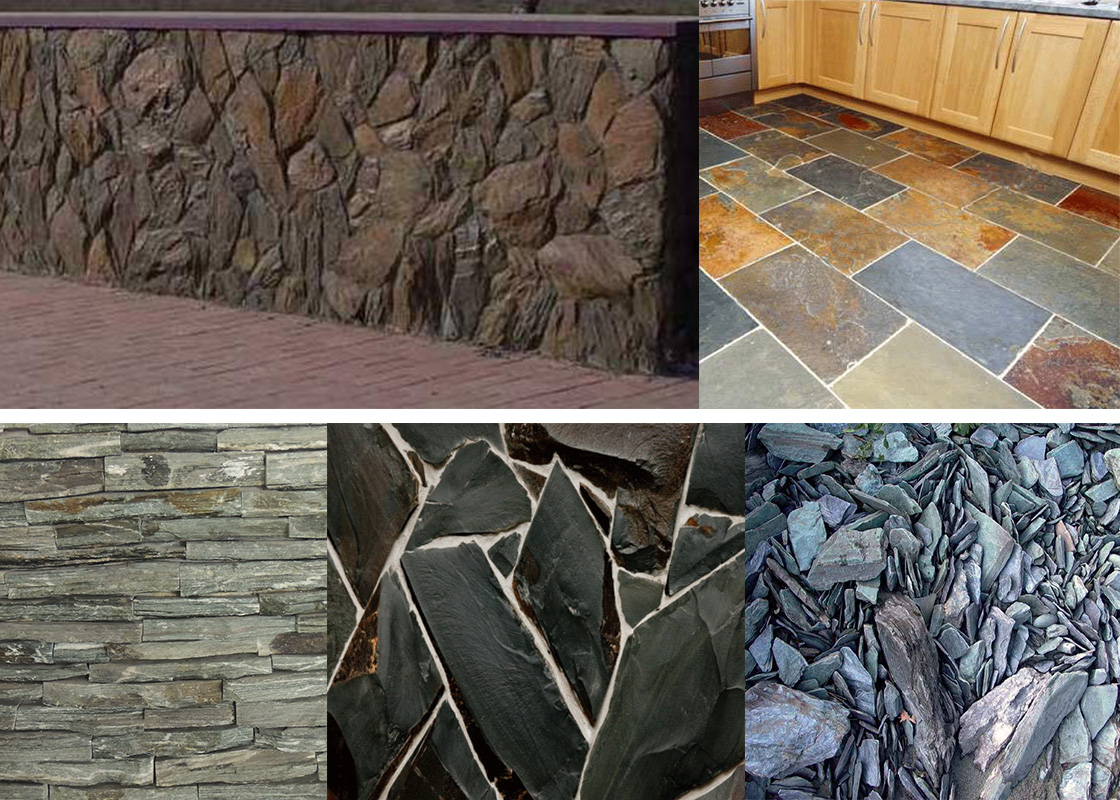
Layered fine-grained stone formed from clays, sedimentary rocks and sometimes quartz. A characteristic feature - the ability to split into thin plates. Quite popular today a kind of facing stone.
Color palette: dark gray, black, gray-brown, yellow, red-brown, often mottled.
Physical properties: properties common to all types of oil shale - strong structure, sufficient water resistance (water absorption 0.1-3%), frost and fire resistance, exemplary heat and sound insulation. It is easy to handle, well cut and not crumbly, resistant to the influence of the external environment. Hardness, water absorption, color and texture depend on the type of stone, as it is very heterogeneous. Only black, green and grey oil shale can be polished; slates of oil shale are usually left with a natural, slightly uneven surface, less often polished.
Application of slate:
- exterior and interior wall and floor cladding
- cladding of fire-places, stairs, allocation of separate zones, decoration of arches, niches, etc.
- landscape compositions; paving and gardening of outbuildings
- as a roofing material
Travertine

Lime tuff, an intermediate form of stone between limestone and marble. Ideal material for tile work.
Palette of colors: the most common shades from light beige to hazelnut; darker, brownish shades of travertine are less common; there are also intensely colored travertine stones, red and yellow ones from Iran.
Physical properties: low abrasion coefficient, high thermal conductivity and heat resistance, lightness, it is good for cutting, grinding and polishing, it does not slip when exposed to water. The properties of travertine depend on the conditions of origin of the stone: the more organic inclusions in it (shells, leaves, etc.), the more porous it will be; density is determined by the depth of the stone. A peculiarity of travertine is its ability to change after mining; pale varieties may turn yellow because of the oxidation of iron salts, while their hardness increases with time.
Darker travertine varieties have better technical qualities. White travertine is usually left unpolished: its warm color compares favorably to the cool white of polished marble.
Application of travertine:
- exterior wall cladding
- floor paving
- facing of fireplace portals, stairs, allocation of zones, registration of arches, niches, etc.
- decorating of bathrooms, saunas
Dolomite

A sedimentary rock consisting of the mineral of the same name; a "relative" of marble.
Color palette: colorless or white, yellowish, brownish (due to admixture of iron hydroxides and clay particles), shining - from glassy to matte and pearly; often has a fanciful pattern. Valuable pink dolomites are rare, as well as translucent and transparent.
Physical properties: durability, frost resistance, high strength, refractoriness; easy to process; hard grades - polished.
Structurally, dolomites can be marble-like, porous and dense. The latter are used to make facing slabs for exterior finishing of buildings. These are the famous Balakovskaya, Kovrovskaya and Kokcheyevskaya dolomites, which have been used by Russian architects in the construction of white stone churches from the earliest times. The porous varieties are used in the design of gardens.
Application:
- interior and exterior finishes
- landscape design (dry walls, shoring)
- paving of paths and squares
Breccia
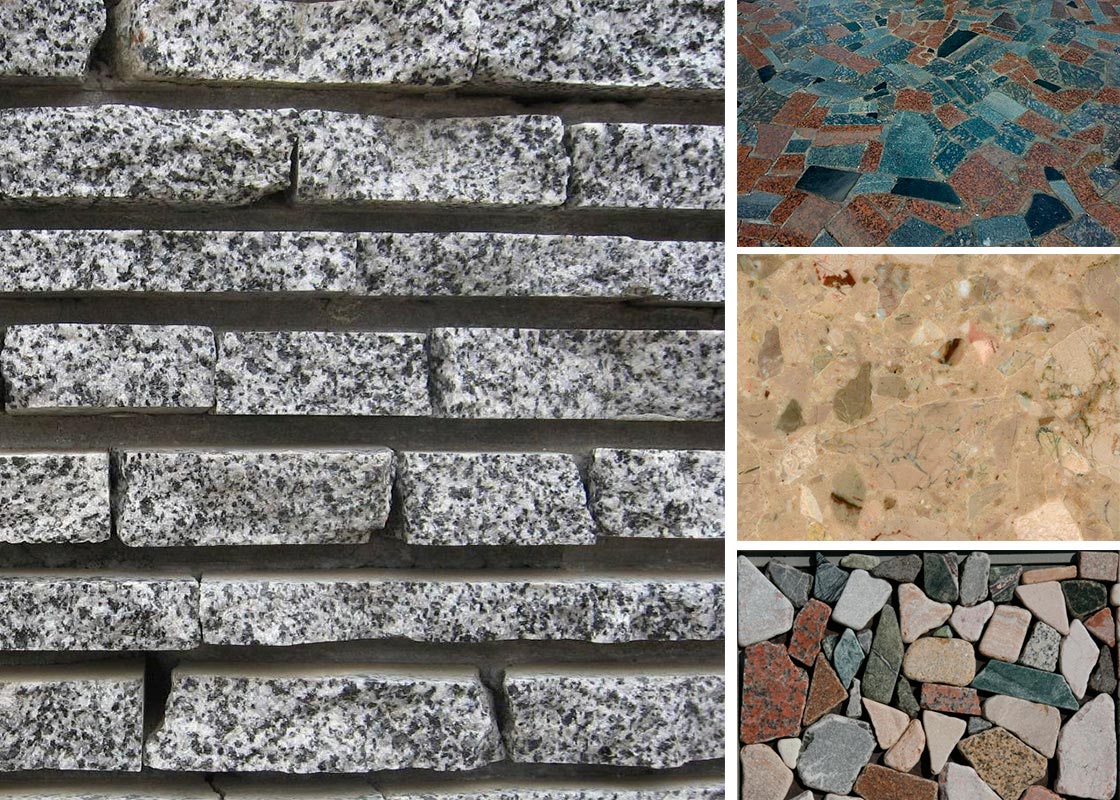
A clastic rock consisting of fragments of one (monomictic) or several (polymictic) rocks bound together by some mineral substance (cement). It differs from conglomerates (cemented rounded pebbles) by angular shape of included pebbles and rubble and by origin.
Physical properties: average density - in limits of 2600-2850 kg/m3, durability at compression - 50-160 MPa. The presence of inclusions of different hardness makes it difficult to process the stone with cutting and grinding tools. The breccias are polished unevenly, as the cementing agent is not amenable to polishing.
The color palette: the popular varieties are variegated red, brown, gray, black, green and yellow, but also relatively monochromatic brown-yellow or red-brown varieties. The variety of inclusions makes breccia a very decorative stone.
Application:
- flooring
- interior wall cladding (polished slabs only)
- paving of paths and squares
Sandstone
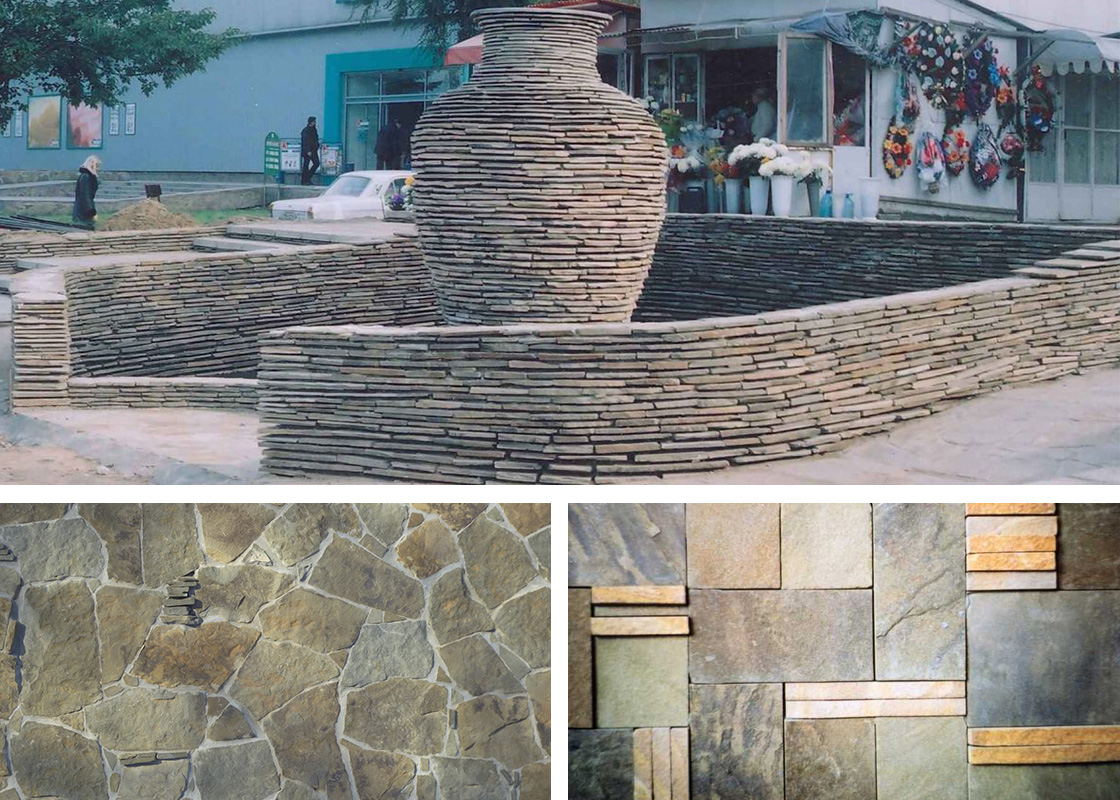
A sedimentary rock; a homogeneous or layered aggregation of grains of sand bound together by a mineral (cement). The strength of the material depends on this element: the strongest are siliceous sandstones, if the binder is easily soluble (gypsum or clay), the sandstone is short-lived.
In construction and decoration are used quartz sandstones, as well as arkose (with a predominance of feldspars) and greywacke (sandstones of complex composition with a high percentage of fragments of rocks).
The color palette is gray, gray-green, shades of yellow, red-brown, and brown. Fine-grained red, brown and green varieties of sandstone are considered ornamental.
Physical Properties: Density (2250-2670 kg/m3), durability, high wear resistance; water absorption 0,63-6,0%; porosity depends on the composition of stone and varies from 0,69 to 6,70%.Sandstones do not lend themselves to polishing, so the most popular textures of sandstone are chopped, sawn, sometimes polished. According to the degree of processing, sandstones are divided into three groups:
- sawn sandstone — a solid rock sawn into layers;
- ripped sandstone — irregularly shaped natural strata, varying in size and thickness;
- rubble Sandstone — stones of rough shape, obtained by blasting, is used for landscaping works, laying the foundations of buildings.
Application:
- cladding of plinths and walls of houses, fences, columns
- cladding of interiors (in particular fireplaces) and stairs
- laying of footpaths, garden paths, terraces
- landscape design (fountains, streams, cascades, rock gardens)
Limestone

A sedimentary rock, usually of organic origin, consisting mainly of calcite, often with a mixture of quartz, clay and sandy particles; often contains the remains of fossil skeletons.
The physical properties of the material are determined by its composition and structure.
Depending on the structure, limestones are divided into:
- dense — made of fine-grained lime feldspar and fragments of lime shells; such limestone is used in the manufacture of slabs for exterior and interior cladding;
- porous — lime tuff, travertine, all kinds of decorative shells;
- marble-like;
- earthen (chalk)
In terms of compressive strength limestone, as well as dolomites, conditionally divided into three groups: strong, medium strength and low strength.
- Strong (marble-like) limestones are well polished, give mirror shine, are used for external and internal furnishings and flooring.
- Medium-strength ones give a glossy surface - a light, non-mirror shine. Suitable for stone cladding and flooring in private homes and apartments.
- Low-strength ones do not accept polishing, only glossing is possible. They are not recommended for flooring, but are good for stone carving, small architectural forms and vertical stone veneers.
Limestone has a good frost resistance (from 40 to 100 cycles), easily machinable, polished - very decorative.
Color palette: often have white, yellowish, light gray, less often - pinkish colors. In terms of decorative value, white limestone with yellow and pink hue is considered the most valuable; black limestone is known as anthracnite.
Application:
- interior and exterior cladding of buildings and premises
- retaining walls in landscaping in the form of masonry stone